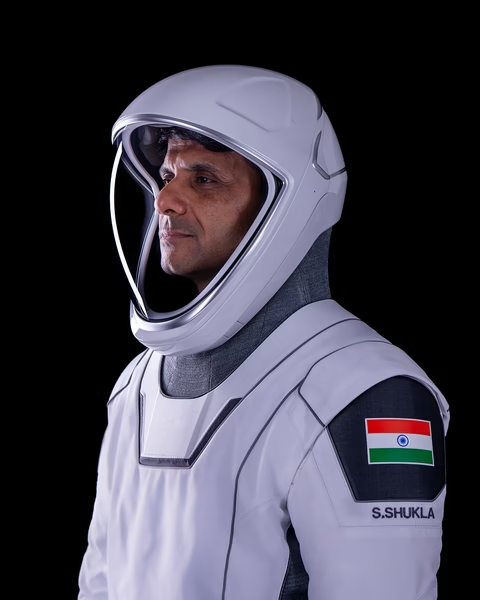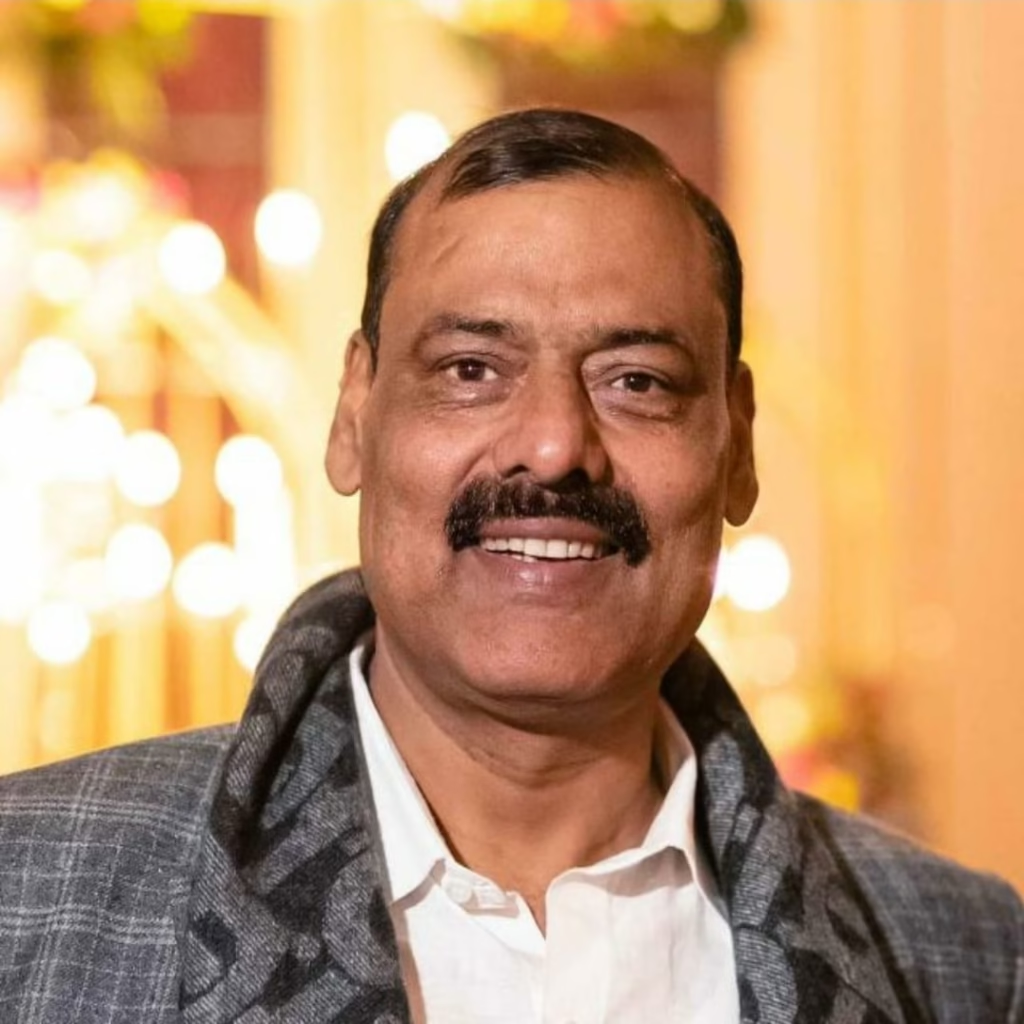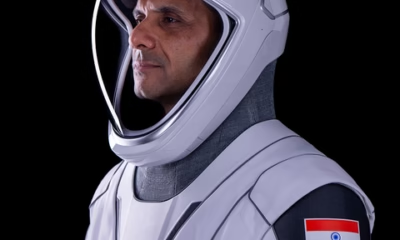Society
SpaceX prepares for the Great Filter – but why?
What’s Elon Musk’s gameplan to get humans to thrive in the universe all about?

Two weeks ago, Ed Publica did a news story on Elon Musk’s tweet. It sure was a headline topic in itself. “We are mapping out a game plan to get a million people to Mars,” posted Musk. “Civilization only passes the single-planet Great Filter when Mars can survive even if Earth supply ships stop coming.”
Press releases that came in the wake of the tweet, never did engage with Musk’s invocation of – the Great Filter – which as the astronomer Seth Shostak once stated, a ‘variant on the Fermi paradox’.
The Fermi paradox was borne out of an idea proposed by the enigmatic 20th century theoretical physicist, Enrico Fermi, who posed a profound, philosophical question: If an intelligent civilization were capable of space travel, and extraterrestrial life existed, then where are they?
The question itself was a paradoxical idea. Either of course, aliens don’t exist – or if they do, then they’re hiding in plain sight, not wanting to be contacted. Perhaps in the latter case, aliens want to avoid being colonized or wiped extinct by a civilization with superior technology. No one knows what the answer is. We don’t know yet if it even is a paradox with an answer.
But the Great Filter theory, proposed by an economist, Robin Hanson in 1998 makes an interesting argument that offers a possible resolution against the Fermi paradox. Maybe life is uncommon, or can easily go extinct. There can be some factors at play to stop a civilization from thriving and spawn a population to safeguard it.
Maybe humanity’s destined to live, and then die on earth – only to live on Mars, until every resource exhausts and human genes are ferried to distant exoplanets to hopefully spawn and recreate humanity there. Or perhaps humanity’s alone amongst the trillions of stars in the universe, because someone has to make the first step to show how difficult it is for life to thrive.

Credit: Greg Rakozy / Unsplash
How feasible is this?
Musk’s prophetic vision is more his vision for humanity – reminiscent in science fiction novels and films.
There’s a line from the movie Interstellar (2014), when Michael Caine, playing an astrophysicist, says, ‘We’re not meant to save the world, we’re meant to leave it.’ In the movie, earth gets plagued by crop blight, and people starve to death when food resources are hard to sustain. Although the problem was foreseeable, we were too late to act on it. And that was the main driver of the plot. Astronauts were dispatched into a wormhole and tunnel through into a different galaxy light years away. Humanity was doomed, and so the astronauts prepared human embryos to take our place and be the Adam and Eves of their species.
The Great Filter and the Fermi paradox are at best a useful thinking exercise about the myriad ways human imagination really works.
Musk’s idea to colonize Mars makes some sense in that it’s about taking a small step to demonstrate we can demonstrate a necessary first step of survival.
But then space is cruel and indifferent. The Martian atmosphere is completely thin, with almost zero atmospheric pressure. It’s not even about the carbon dioxide in what’s left in that atmosphere – there’s just barely any atmosphere there. Musk probably is aware of this, given he has a physics background!
For instance, how do we pressurize a whole planet? The optimism is that technology can circumvent these problems.
This technology, possibly in a few decades, can seem like ‘magic’ to us. The Great Filter and the Fermi paradox are at best a useful thinking exercise about the myriad ways human imagination really works.
And until we demonstrate basic physics that works in its favor, aren’t these just wishful fantasies?
For instance, how can SpaceX ‘gameplan’ Mars’ colonization, if the company doesn’t itself survive the Great Filter test? Who else in the world is taking this seriously apart from Elon Musk?
‘Colonizing’ space
Musk’s gameplan invites more questions, since there’s barely any discussion that he leads on it.
Musk is polarizing to his critics, who question the need for expensive space exploration programs that have no direct benefit on our economy.
Musk’s usage of the term ‘colonization’ can be seen to resonate with the sentiment in the 15th century when the West discovered the rest of the world through the sea-route. However, it didn’t fare well for the rest of the world. One notable example is when Christopher Columbus, ‘discovered’ North America, when he was in search of India – he and his men began the subjugation of Native Americans.

An 1850 painting depicting Christopher Columbus (center) surrounded by people, before embarking a ship in August 1492. Credit: Wellcome Trust
Meanwhile, the Portuguese voyager Vasco da Gama arrived at the shores of India, in Kozhikode. That opened up routes for vessels of the East India Company from across Europe to trade – and then colonize Indians.
I’m not suggesting Musk has nefarious plans at play. However, what’s the chance that future government policies somehow get blindsided, or ignorant of advice from experts outside science on the political implications of space exploration?
And what better ‘gameplan’ can there really be if it starts with experts from a diversity of fields huddling together for an enlightening discussion?
Society
How 2025’s Emerging Technologies Could Redefine Our Lives

In an age when algorithms help cars avoid traffic and synthetic microbes could soon deliver our medicine, the boundary between science fiction and science fact is shrinking. The World Economic Forum’s Top 10 Emerging Technologies of 2025 offers a powerful reminder that innovation is not just accelerating — it’s converging, maturing, and aligning itself to confront humanity’s most urgent challenges.
From smart cities to sustainable farming, from cutting-edge therapeutics to low-impact energy, this year’s list is more than a forecast. It’s a blueprint for a near future in which resilience and responsibility are just as crucial as raw invention.
Sensing the World Together
Imagine a city that can sense a traffic jam, redirect ambulances instantly, or coordinate drone deliveries without a hiccup. That’s the promise of collaborative sensing, a leading entry in the 2025 lineup. This technology enables vehicles, emergency services, and infrastructure to “talk” to each other in real time using a network of connected sensors — helping cities become safer, faster, and more responsive.
It’s one of several technologies on this year’s list that fall under the theme of “trust and safety in a connected world” — a trend reflecting the growing importance of reliable information, responsive systems, and secure networks in daily life.
Trust, Truth, and Invisible Watermarks
But as digital content spreads and AI-generated images become harder to distinguish from reality, how do we safeguard truth? Generative watermarking offers a promising solution. By embedding invisible tags in AI-generated media, this technology makes it easier to verify content authenticity, helping fight misinformation and deepfakes.
“The path from breakthrough research to tangible societal progress depends on transparency, collaboration, and open science,” said Frederick Fenter, Chief Executive Editor of Frontiers, in a media statement issued alongside the report. “Together with the World Economic Forum, we have once again delivered trusted, evidence-based insights on emerging technologies that will shape a better future for all.”
Rethinking Industry, Naturally
Other breakthroughs are tackling the environmental consequences of how we make things.
Green nitrogen fixation, for instance, offers a cleaner way to produce fertilizers — traditionally one of agriculture’s biggest polluters. By using electricity instead of fossil fuels to bind nitrogen, this method could slash emissions while helping feed a growing planet.
Then there’s nanozymes — synthetic materials that mimic enzymes but are more stable, affordable, and versatile. Their potential applications range from improving diagnostics to cleaning up industrial waste, marking a shift toward smarter, greener manufacturing.
These technologies fall under the trend the report identifies as “sustainable industry redesign.”
Health Breakthroughs, From Microbes to Molecules
The 2025 report also spotlights next-generation biotechnologies for health, a category that includes some of the most exciting and potentially transformative innovations.
Engineered living therapeutics — beneficial bacteria genetically modified to detect and treat disease from within the body — could make chronic care both cheaper and more effective.
Meanwhile, GLP-1 agonists, drugs first developed for diabetes and obesity, are now showing promise in treating Alzheimer’s and Parkinson’s — diseases for which few options exist.
And with autonomous biochemical sensing, tiny wireless devices capable of monitoring environmental or health conditions 24/7 could allow early detection of pollution or disease — offering critical tools in a world facing climate stress and health inequities.
Building Smarter, Powering Cleaner
Under the theme of “energy and material integration”, the report also identifies new approaches to building and powering the future.
Structural battery composites, for example, are materials that can both carry loads and store energy. Used in vehicles and aircraft, they could lighten the load — quite literally — for electric transportation.
Osmotic power systems offer another intriguing frontier: by harnessing the energy released when freshwater and saltwater mix, they provide a low-impact, consistent power source suited to estuaries and coastal areas.
And as global electricity demand climbs — especially with the growth of AI, data centers, and electrification — advanced nuclear technologies are gaining renewed interest. With smaller, safer designs and new cooling systems, next-gen nuclear promises to deliver scalable zero-carbon power.
Toward a Converging Future
This year’s edition of the report emphasizes a deeper trend: technological convergence. Across domains, innovations are beginning to merge — batteries into structures, biology into computing, sensing into infrastructure. The future, it seems, will be shaped less by standalone inventions and more by integrated, systemic solutions.
“Scientific and technological breakthroughs are advancing rapidly, even as the global environment for innovation grows more complex,” said Jeremy Jurgens, Managing Director of the World Economic Forum, in the WEF’s official media release.
“The research provides top global leaders with a clear view of which technologies are approaching readiness, how they could solve the world’s pressing problems and what’s required to bring them to scale responsibly,” he added.
Beyond the Hype
Now in its 13th year, the Top 10 Emerging Technologies report has a strong track record of identifying breakthroughs poised to move from lab to life — including mRNA vaccines, flexible batteries, and CRISPR-based gene editing.
But this year’s list is not just a celebration of possibility. It’s a reminder of what’s needed to deliver impact at scale: responsible governance, sustained investment, and public trust.
As Jeremy Jurgens noted, “Breakthroughs must be supported by the right environment — transparent, collaborative, and scalable — if they are to benefit society at large.”
In a time of climate stress, digital overload, and health inequity, these ten technologies offer something rare: a credible roadmap to a better future — not decades away, but just around the corner.
Society
Shukla is now India’s first astronaut in decades to visit outer space
Shubhanshu Shukla, the mission pilot, has now become the first Indian astronaut in space in decades; only second to fellow air force veteran and group captain, Rakesh Sharma during the Soyuz mission in 1984.

After innumerable launch delays, the private human spaceflight mission Axiom-4, finally soared to space at about 1200 hours Indian Standard Time (IST) from Nasa’s Kennedy Space Center, Florida. The Crew Dragon capsule, carrying an international crew of four astronauts, set sail for the International Space Station (ISS) and on schedule to dock with the station tomorrow at approximately 1500 hours IST.
Shubhanshu Shukla, a group captain with the Indian air force, and the mission pilot, has now become the first Indian astronaut to visit space in decades. He’s just the second Indian, following Rakesh Sharma, a squadron leader with the air force then (but retired as wing commander) during 1984’s Soyuz T-11 mission.
Accompanying Shukla on Axiom-4 are mission specialists, Tibor Kapu and Sławosz Uznański-Wiśniewski, from Hungary and Poland respectively. The duo, like Shukla, are the first astronauts in decades from their countries. Meanwhile, Peggy Whitson, the mission commander is a veteran American astronaut who’s embarked upon her second private spaceflight mission.
Upon arriving in space, Shukla addressed the Indian audience during the live broadcast, explaining how the mission marks the beginning of the Indian human spaceflight program. He espoused symbolism invoking the colors of the national flag on his shoulder patch.
“The tricolor embossed on my shoulders tells me that I am with all of you,” he said in his native Hindi. “I want all of you to be part of this journey. Your chest, too, should swell with pride … Together, let’s initiate India’s Human Space Programme. Jai Hind! Jai Bharat!”
The Indian Space Research Organization (ISRO) had kickstarted the human spaceflight program about two decades ago to mark Indian presence in space. In February 2024, Shukla was amongst four Indian candidate astronauts handpicked to partake in the country’s first crewed mission, Gaganyaan. As such in preparation, as well ahead of the Axiom-4 mission, Shukla had enrolled for a master’s degree in aerospace engineering from the Indian Institute of Science, Bengaluru.
Besides the obvious spectacle the Axiom-4 launch bears for India to expand its space program efforts, there is a space science component to this mission this time. India has filled in slots for a series of seven experiments designed by central institutions.
“He is not going up there alone,” Alok Kumar, a physicist and one of the principal investigators of these experiments, said in an interview to The Print’s Soumya Pillai earlier today. He put these experiments in context of India’s plan to consolidate outer space as a habitat to plan and conduct scientific experiments, to set up base in orbit for the long-term, or even in the moon. Only last year, ISRO announced plans to set up Bharatiya Antariksh Station, at low-earth orbit in 2028.
The microgravity experiments will buzz interest among the scientific community, hoping to make an impact. And Shukla will lead investigations into them, donning a scientist’s lab coat as it were. In fact, he already has a research paper under his belt, with his name listed as coauthor. Despite that, he hasn’t received his masters’ degree yet. Dr. Kumar, who also happens to be Shukla’s thesis advisor at IISc, revealed in The Print interview, the latter ‘s dissertation is still incomplete. He only wished Shukla would return and complete it. “I won’t let him off the hook,” he said lightheartedly.
Earth
In ancient India, mushy earth made for perfume scent
Kannauj, a city in the Indian state of Uttar Pradesh, offers a sustainable alternative in producing perfumes using traditional modes of distillation.

A sweet scent typically lingers around in the air at Kannauj, an ancient city in India’s most populous state of Uttar Pradesh. It’s an imprint of the countless occasions when it had rained, of roses that bloomed at dawn, and of sandalwood trees that once breathed centuries of calm.. Though mushy smells are not unique to Kannauj, the city utilized traditional distillation methods to make perfume out of these earthly scents.
Kannauj has had a longstanding tradition in perfume-making since four centuries ago. The city, colloquially known as the country’s ancient perfume capital, still uses rustic copper stills, wood-fired ovens, and bamboo pipes leading to sandalwood oil-filled vessels, or attar as it is colloquially known, to make their perfume. Though it gives a pre-industrial look, a closer peek would reveal an ecosystem of complex thermal regulation, plant chemistry, sustainability science, and hydro-distillation chemistry at work.
When synthetically-made but sustainable perfumes, and AI-generated ones share the spotlight today, Kannauj’s tryst with perfumes offer an alternative, sustainable model in traditional distillation, which is inherently low-carbon, zero-waste, and follow principles of a circular economy; all in alignment with sustainable development goals.
Traditional perfume-making is naturally sustainable
In industrial processing, hydro-distillation is a commonly done to separate substances with different boiling points. Heating the liquids produce vapors, which can later be liquefied in a separate chamber. Perfumers in Kannauj follow the same practice, except it promises to be more sustainable with the copper stills, a process colloquially known as dheg-bhakpa hydro-distillation.
There’s no alcohol or synthetic agents in use. Instead, they heat up raw botanicals – such as roses, vetiver roots, jasmine, or even sunbaked clay – to precise temperatures well short of burning, thereby producing fragrant vapor. The vapors are then guided into cooling chambers, where they condense and bond with a natural fixative, often sandalwood oil. Plant residue is the only byproduct, which finds use as organic compost to cultivate another generation of crops.

Trapping earthly scent to make perfume
In the past five years, Kannauj’s veteran perfumers noticed a quiet, but steady shift in their timely harvest and produce. Rose harvests have moved earlier by weeks. Vetiver roots grow shallower due to erratic rainfall. Jasmine yields are fluctuating wildly. The local Ganges river, which influences humidity levels essential for distillation timing, is no longer as predictable. For an entire natural aromatic economy built on seasonal synchrony, this uncertainty has rung alarm bells.
“The scent of a flower depends not just on the flower itself,” Vipin Dixit, a third-generation attar-maker whose family has distilled fragrance for decades, said to EdPublica.
“It depends on the weather the night before, on the heat at sunrise, on the moisture in the air. Even the soil has a scent-memory.”

As a result, perfumers in Kannauj have begun to adapt, applying traditional wisdom through a modern scientific lens. Local distillers are now working with botanists and environmental scientists to study soil microbiomes, measure scent compounds using chromatography, and develop community-based rainwater harvesting to ensure sustainable crop health.
One of the most surprising innovations is trapping petrichor — the scent of first rain — through earth attars. Clay is baked during extreme heat waves, mimicking summer conditions, then distilled to trap the scent of rain hitting dry soil. This aroma, called mitti attar, is one of the few scents in the world created from an environmental phenomenon; and not a flower.
At a time when the world is scrambling to save biodiversity, the humble attar may become a template for green chemistry — one that doesn’t just preserve scent, but also restores the relationship between science, nature, and soul.
-

 Society4 months ago
Society4 months agoStarliner crew challenge rhetoric, says they were never “stranded”
-

 Space & Physics3 months ago
Space & Physics3 months agoCould dark energy be a trick played by time?
-

 Earth4 months ago
Earth4 months agoHow IIT Kanpur is Paving the Way for a Solar-Powered Future in India’s Energy Transition
-

 Space & Physics3 months ago
Space & Physics3 months agoSunita Williams aged less in space due to time dilation
-

 Learning & Teaching4 months ago
Learning & Teaching4 months agoCanine Cognitive Abilities: Memory, Intelligence, and Human Interaction
-

 Earth2 months ago
Earth2 months ago122 Forests, 3.2 Million Trees: How One Man Built the World’s Largest Miyawaki Forest
-

 Women In Science3 months ago
Women In Science3 months agoNeena Gupta: Shaping the Future of Algebraic Geometry
-

 Society5 months ago
Society5 months agoSustainable Farming: The Microgreens Model from Kerala, South India






















